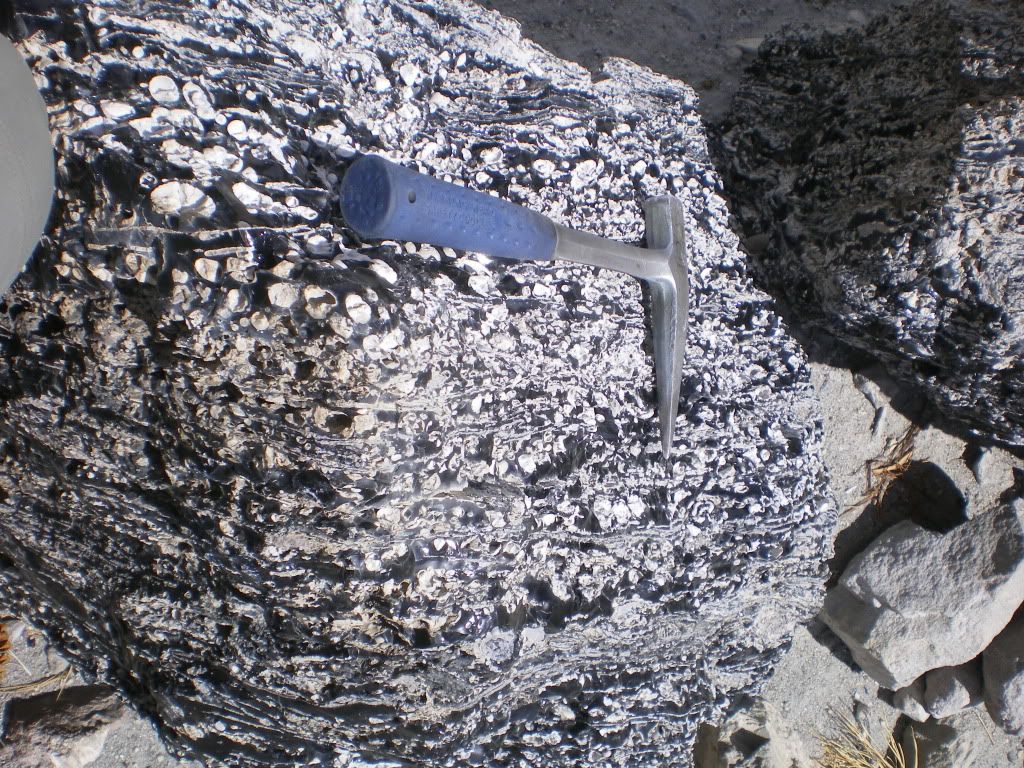Inspired by fellow geoblogger Brian Romans (of Clastic Detritus) who provides impeccable examples of geology in his Friday Field Photo series, I plan to post one image weekly that I think illustrates interesting igneous geological processes and products. Thus, I kick off my Interesting Igneous Image series with my inaugural image:
This image was taken near a pumice mine on the eastern flanks of the Mono Craters chain near June Lake, California. It is of an obsidian chocked-full of spherulites. Spherulites consist of radiating fibres of K-feldspar and quartz (or a high-T polymorph) from a nucleus. This particular rock contains spherulites which have underwent varying degrees of deformation, suggesting a complex relationship between spherulite growth and deformation. Some sphrulites are stretched to the point that they even define flow bands! For more information on the technical details as to how spherulites form, Lofgren (1971) provides an interesting read.
Have a great weekend everyone!
Reference
(1971), Spherulitic Textures in Glassy and Crystalline Rocks, J. Geophys. Res., 76(23), 5635–5648, doi:10.1029/JB076i023p05635.
Photo above (c) 2010 by Cole Kingsbury


No comments:
Post a Comment